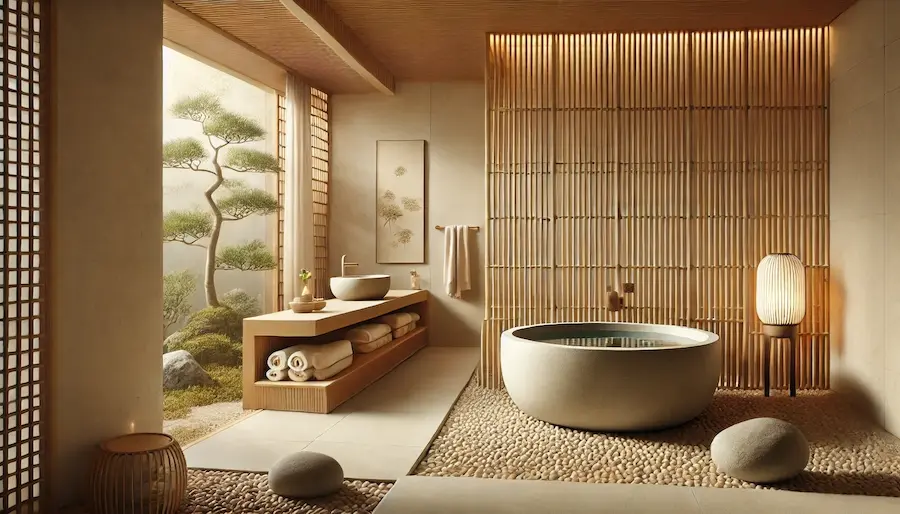Zen bathrooms offer a tranquil retreat, emphasizing simplicity, natural materials, and a harmonious atmosphere. This article explores their origins, key features, applications, and considerations for incorporating Zen elements into your bathroom.
Introduction to Zen Bathrooms
Inspired by Japanese Zen philosophy, Zen bathrooms focus on creating serene spaces that promote relaxation and mindfulness. By integrating natural elements and minimalist design, these bathrooms serve as personal sanctuaries from daily stress.
History and Origins of Zen Bathrooms
Zen design principles stem from traditional Japanese aesthetics, emphasizing harmony with nature, simplicity, and balance. Incorporating these principles into bathroom design fosters a calming environment conducive to meditation and tranquility.
Key Features of Zen Bathrooms
Incorporating Zen elements can transform a bathroom into a peaceful haven:
- Natural Materials: Utilize wood, stone, and bamboo to create a connection with nature. For instance, a wooden vanity or bamboo flooring adds warmth and texture.
- Neutral Color Palette: Employ soft, earthy tones like beige, white, and pale brown to evoke a sense of calm and neutrality.
- Minimalist Design: Embrace simplicity by reducing clutter and focusing on essential elements. This approach enhances the sense of space and tranquility.
- Indoor Plants: Introduce greenery to bring life and freshness into the space, contributing to a tranquil environment. Plants like bamboo or orchids thrive in bathroom conditions and enhance the Zen vibe.
- Soft Lighting: Incorporate ambient lighting, such as wall sconces or dimmable lights, to create a soothing atmosphere. Natural light is also essential; consider positioning your tub under a window to maximize this effect.
Applications of Zen Bathrooms
Zen bathroom designs can be adapted to various settings:
- Urban Apartments: Introduce Zen elements to create a peaceful oasis amidst the city’s hustle. Incorporating natural materials and minimalist design can transform a compact bathroom into a serene retreat.
- Spa Facilities: Implementing Zen designs can offer clients a calming and rejuvenating experience, enhancing the overall appeal of the establishment.
- Luxury Homes: Incorporate Zen aesthetics to create a spa-like bathroom that promotes relaxation and well-being.
Considerations When Choosing Zen Bathroom Elements
When designing a Zen bathroom, consider the following:
- Space Optimization: Ensure the layout promotes a sense of openness and flow, avoiding overcrowding. Built-in storage solutions can help maintain a clutter-free environment.
- Material Selection: Choose materials that are not only aesthetically pleasing but also durable and suitable for bathroom conditions. For example, select moisture-resistant woods and stones.
- Personalization: While maintaining simplicity, incorporate elements that reflect your personal style to make the space uniquely yours.
Conclusion
Zen bathrooms offer a harmonious blend of simplicity, natural elements, and tranquility. By understanding their origins and key features, you can create a bathroom that serves as a serene retreat, promoting relaxation and mindfulness in your daily routine.
